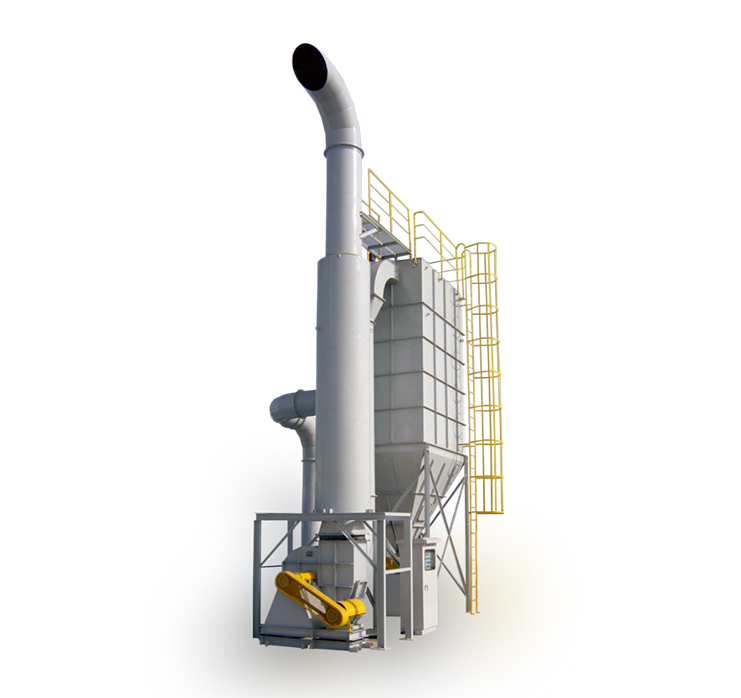Model
CDC Series
Dust Collector (Bag Filter Type)
- Filter Filter Cloth (Basic Polyester. Can Be Changed to Other Materials Such As Nomex, Ryton, Etc.)
- Cleaning Air Pulsing Method (Air Compressor Required)
- Purpose Removal of High Concentration of Dust Gas
Product Introduction
This air pollution control facility, known as an updraft dust collector, uses collision, blocking, diffusion, and static electricity mechanisms to remove fine particles from dusty gas. It is most commonly used for removing fine particles from dusty gas.
This device sucks in dust-laden air and passes it through several filter bags to capture the dust. Over time, the layer of dust that accumulates on the filter bags acts as an additional filter, increasing the capture efficiency for fine dust. However, the long-accumulated dust layer can cause serious resistance and block air flow. Therefore, it is necessary to clean and readjust the filter bags using an Air Pulse Jet at appropriate times.
A well-designed filtration dust collector operated properly can achieve a filtration efficiency of over 99% based on the weight of the dust, and in some cases, efficiencies above 99.9%.
Key Features
-
Dust collection equipment used in various working environments
- Dust collection equipment applicable to various working environments and sources of pollution, as it allows the application of different types of filter media depending on the type and characteristics of the pollution source and its temperature.
- The rate of pressure loss increase in the filter media is gradual, allowing stable operation over long periods.
- It can effectively handle high temperature and high concentration dust, and has a high dust collection efficiency for fine particles.
Key Design Factors
-
- The sizing or grading of dust collectors is determined by the air flow rate relative to the filter area, known as the filtration velocity.
- Filtration velocity significantly impacts dust collection efficiency and is designed to not exceed 2m/min, typically ranging from 0.5 to 1.8m/min.
- The filter media is selected based on maximum operating temperature, acid resistance, alkali resistance, and abrasion resistance, suitable for the pollution source.
Process Material Limit Temperature Chemical Resistance Acid (ACID) Alkali (ALKALI) Cement raw material mixing POLYESTER 130℃ Good Vulnerable Cement Kiln Gas & Clinker NOMEX 200℃ Average Excellent
Applications
-
- Facilities emitting particulate matter in carbon, minerals, wood, cement, chemicals, pharmaceuticals, medicine, plastics, P.V.C, A.B.S Resin, asphalt, concrete, food, feed, grain, milling, fertilizer, etc.
- High-temperature dust-laden gas emitting facilities such as foundries, smelting furnaces, boilers, and incinerators.
- Facilities subject to air pollutant discharge facility permits and approvals.
- Workplaces subject to hazardous risk prevention plans submission.



